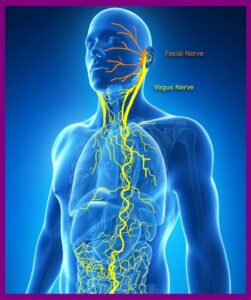Written by Dr. Stephen Porges
Reviewed by Nancy Eichhorn, PhD
In the Beginning
As a laboratory scientist, Stephen W. Porges felt driven to understand what he called the vagal paradox. He noted that humans have two vagal systems: one orchestrates calm states and social engagement behaviors, while the other— a vestigial defensive system—is potentially lethal to mammals. Porges wanted to understand how the vagus nerve was both protective (when expressed as respiratory sinus arrhythmia, RSA) yet threatened our lives when expressed as bradycardia and apnea. His research identified the vagal mechanism underlying the paradox, which evolved into the polyvagal theory (pg. 24).
 When Porges presented his polyvagal theory (PVT) in 1994, his work reframed our clinical understanding of the autonomic nervous system’s role in mental and emotional health, including its impact on stress, resilience, social connections, and our sense of feeling safe (which allows us to reach out and connect with others).
When Porges presented his polyvagal theory (PVT) in 1994, his work reframed our clinical understanding of the autonomic nervous system’s role in mental and emotional health, including its impact on stress, resilience, social connections, and our sense of feeling safe (which allows us to reach out and connect with others).
Decades Later
After decades of witnessing misunderstandings and misrepresentations, he wrote Polyvagal Perspectives: Interventions, Practices, and Strategies (the title is taken from a paper he published in 2007) to set the record straight. He wanted to “clarify his original theory and rectify potential misunderstandings by documenting its scientific foundation” (pg. 24).
He didn’t propose that PVT be proven or disproven. He wanted further research to inform and modify the theory and provide “a perspective to frame research questions—it is not a static theory” (pg. xiv). PVT consists of two components: a series of hypotheses “driven and future-oriented which could potentially lead to enhancements of mental and physical health” (pg.70) and a descriptive model. Porges wanted to emphasize the role of our autonomic state as “an intervening variable in how we respond to internal and external cues” (pg. 71).
Porges offered scientists a challenge to “incorporate an integrative understanding of the role neural mechanisms play in regulating biobehavioral processes” (pg. xiv). He offered his polyvagal perspective to encourage “a shift in research from theoretical strategies toward a theory that drives paradigms dependent upon explicit neural mechanisms” . . . “Foremost, a polyvagal perspective emphasizes the importance of phylogenetic changes in the neural structures regulating the ANS” (pg. xiv).
Furthermore, he wrote the book to counter academic attacks on his work and misrepresentations in clinical applications and the new label—Vagal Informed Therapies—being espoused by social media influencers who lack proper academic accreditations. While his work became ‘popular,’ he felt the information was often inaccurate, misconstrued, and misused.
To read the full review, please click here to access the PDF
Photo Credit of Vagus Nerve:
B. Bordoni, PhD From: Neuroanatomy, Cranial Nerve 10 (Vagus Nerve)
https://www.ncbi.nlm.nih.gov/books/NBK537171/figure/article-30952.image.f5/








